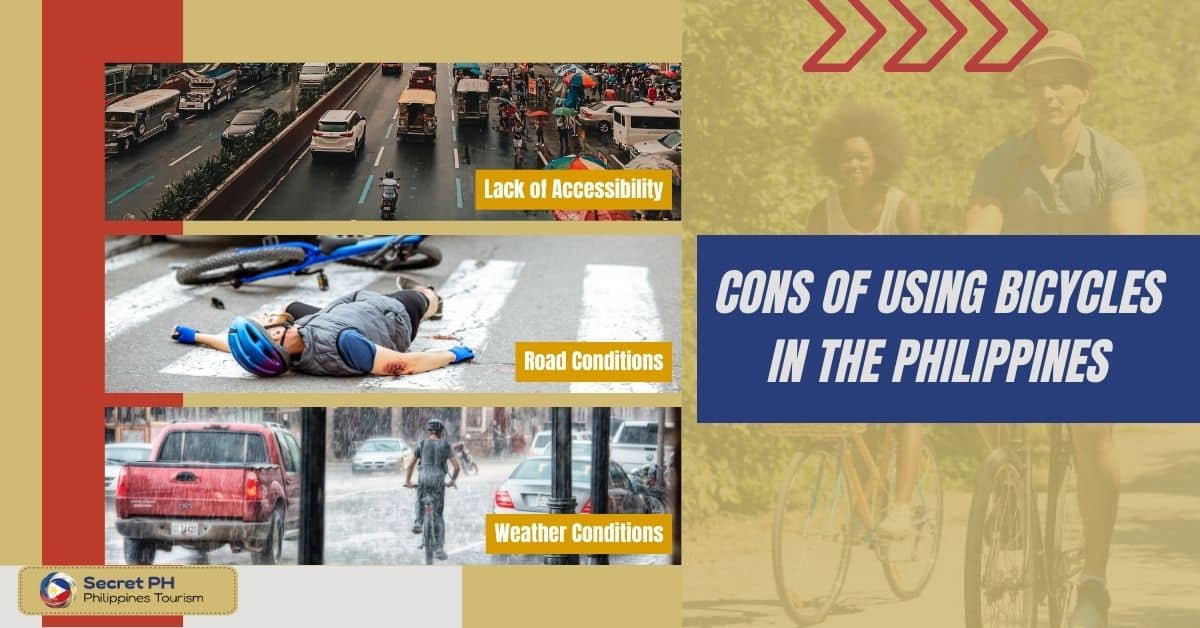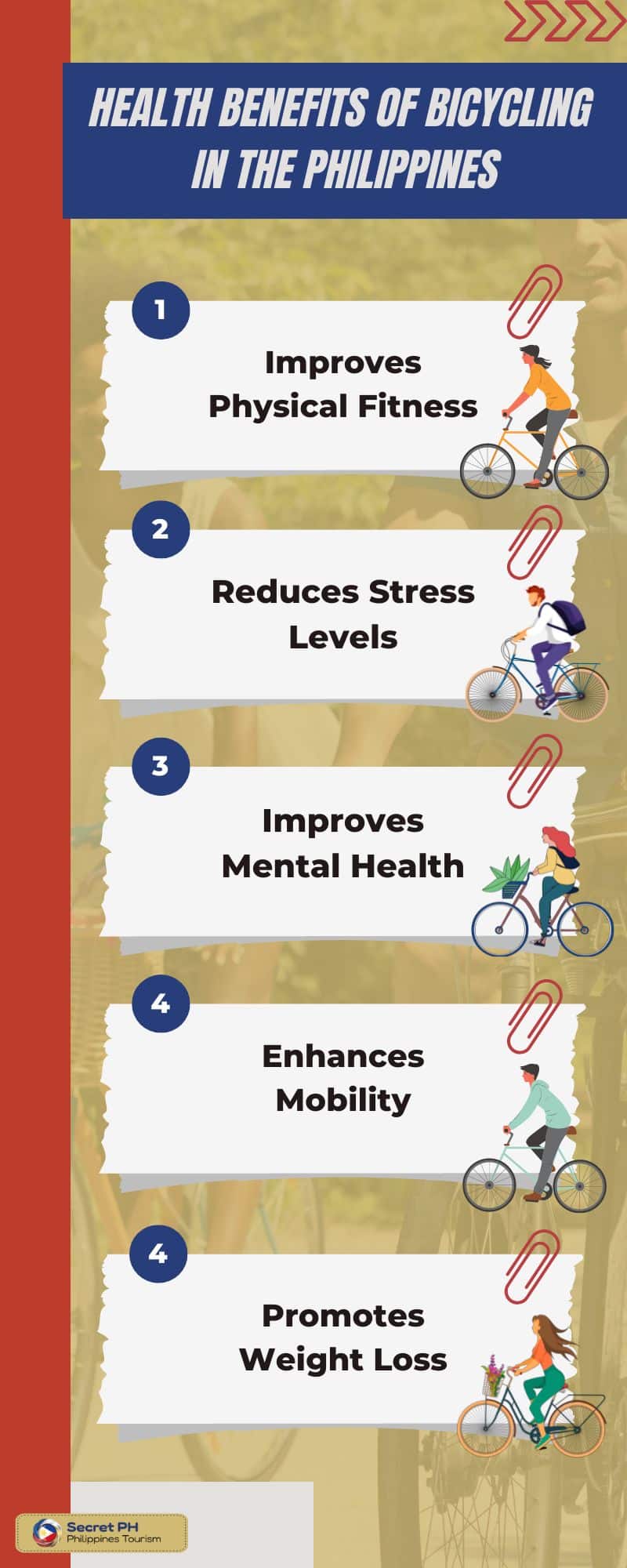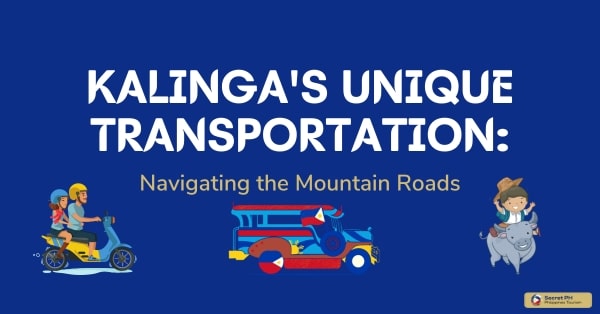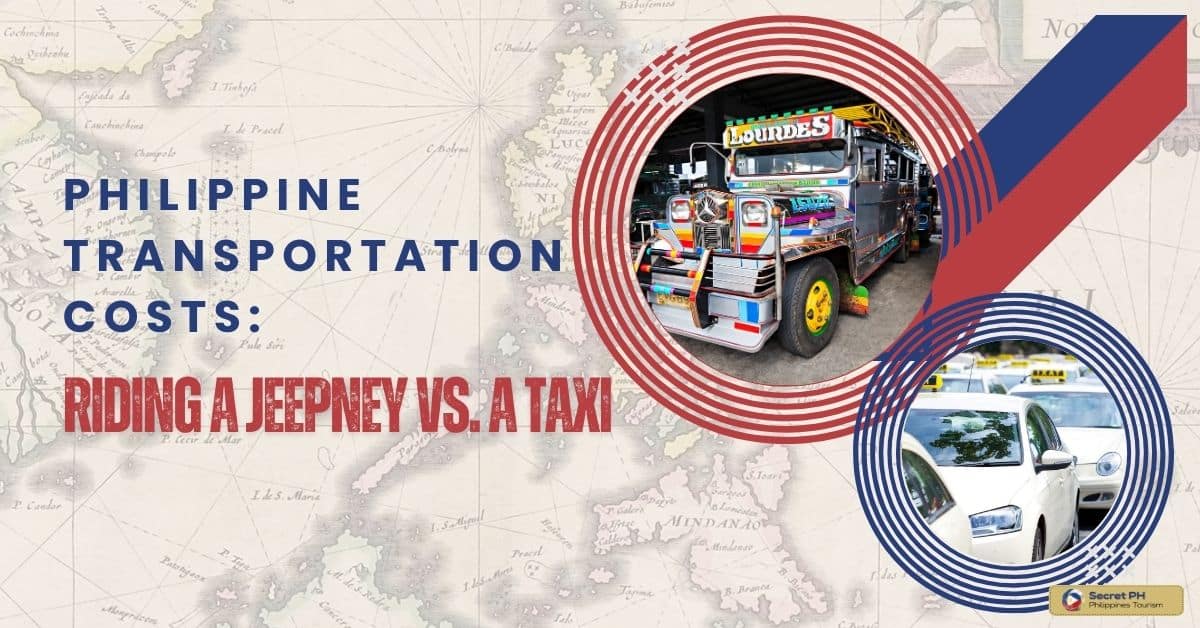Bicycles are one of the most popular and convenient forms of transportation worldwide.
In the Philippines, they offer many advantages such as low costs and environmental friendliness. However, there are also some drawbacks to consider when using a bicycle for commuting or recreational purposes. Bicycling can be a cost-effective and sustainable alternative to motor vehicles, but it also has its challenges in terms of accessibility and road conditions.
This article will discuss the pros and cons of using bicycles as a mode of transportation in the Philippines, along with tips on how to stay safe while using them and government programs to promote bicycle use. Finally, it will look at the environmental impact of cycling and the health benefits that come with it.

Pros of Using Bicycles in the Philippines
Bicycles are a great way to get around and remain eco-friendly in the Philippines. They offer numerous benefits such as being affordable, convenient, and good for physical health. Here are some of the pros of using bicycles as a mode of transportation in the Philippines.

Cost-Effective
One of the main advantages of using a bicycle is its affordability. Bicycles are much less expensive than motor vehicles and can be used for a fraction of the cost. In addition, they require very little upkeep in terms of maintenance and repair costs.
Convenient
Bicycles are also convenient to use as they do not need to be registered or insured like a motor vehicles. They can also be stored easily in much less space than a car or motorcycle. Furthermore, bicycles are one of the quickest and most agile forms of transportation in the city, which makes them ideal for short trips around town.
Good for Health
Bicycling is an excellent form of exercise that can help build and maintain physical fitness. It also helps to reduce stress levels and improve mental health by releasing happy hormones such as endorphins. Furthermore, cycling can help to promote healthy eating habits since it helps burn extra calories consumed from food.

Cons of Using Bicycles in the Philippines
Using bicycles as a mode of transportation in the Philippines can be beneficial in terms of cost-effectiveness and environmental friendliness, however, there are numerous potential drawbacks that should be taken into account when considering this option. This article will discuss some of the cons associated with using bicycles as a form of transportation and how to mitigate them.

Lack of Accessibility
One of the main drawbacks to using bicycles as a form of transportation in the Philippines is the lack of suitable infrastructure. Many roads and pathways are not designed for cyclists, making cycling unsafe or even impossible in certain areas. In addition, there are often no dedicated bicycle lanes or parking spaces, making it difficult to find a safe place to park and store your bike.
Road Conditions
The road conditions in the Philippines can also pose a challenge when cycling. Poorly maintained roads, potholes, and debris are common, making the ride bumpy and uncomfortable at times. In addition, traffic congestion is often an issue, particularly in cities where there is more motorized traffic.
Weather Conditions
Lastly, weather conditions can also be a factor when considering cycling in the Philippines. Heavy rains can make cycling difficult and dangerous, while extreme heat or cold can make it uncomfortable for extended trips.

Transportation Safety with Bicycles
Bicycles are becoming an increasingly popular form of transportation in the Philippines, offering a cost-effective and eco-friendly alternative to motor vehicles. However, cyclists must take certain precautions in order to ensure their safety while riding on the roads. Here, will discuss tips for staying safe when using bicycles as a mode of transportation in the Philippines.
Wear Protective Gear: It is essential to wear protective gear when cycling, such as helmets, knee and elbow pads, gloves, and reflective clothing. This helps improve visibility on the roads and reduce the risk of injury if an accident occurs. In addition, lights should be used at night to reduce the chance of being hit by a motor vehicle.
Be Aware: Cyclists should be aware of their surroundings and pay attention to traffic signals, road signs, and other cyclists. It is also important to stay in designated bike lanes or paths when available, as this will help improve safety while cycling. When possible, use bike paths and trails that are specifically designed for cyclists.
Follow the Rules: Cyclists should always follow the rules of the road and obey traffic signals, as this will help to keep everyone safe. It is also important to ride at a safe speed, especially around curves or blind spots where it can be difficult to see potential hazards such as other cyclists or pedestrians.
Be Visible: Cyclists should also make sure that they are visible to other road users at all times. This can be achieved by wearing bright and reflective clothing, using lights, and making sure to signal when turning or changing lanes.

Environmental Impact of Bicycle Use
Bicycles are a great sustainable alternative to motor vehicles in the Philippines as they produce zero emissions and require no fuel. This can help reduce air pollution levels, particularly in cities where traffic congestion is an issue. In addition, cycling can help conserve energy by eliminating the need for gasoline or electricity to power the bike.
Cycling can also help reduce noise pollution since it is a silent form of transportation. Bicycles are much lighter than motor vehicles and thus require less energy to manufacture.
Which helps to conserve natural resources such as oil and gas. Finally, cycling can help to reduce greenhouse gas emissions by reducing the amount of carbon dioxide released into the atmosphere from burning fossil fuels.

Health Benefits of Bicycling in the Philippines
The health benefits of cycling are well-documented, and the Philippines is no exception. Cycling can provide numerous physical and mental health advantages for those who regularly use it as a mode of transportation. Here are some of the key health benefits associated with bicycling in the Philippines:

1. Improves Physical Fitness– Regular cycling can help to improve cardiovascular health and increase muscle strength. It is an excellent form of aerobic exercise that can help keep your heart healthy and reduce the risk of certain diseases such as type 2 diabetes.
2. Reduces Stress Levels– Cycling can also be a great way to relieve stress and relax the mind. Studies have shown that regular cycling can help to improve mood, lower cortisol levels, and reduce anxiety.
3. Improves Mental Health– Cycling can also help to promote mental health and cognitive ability by improving concentration and focus. It is a great way to stay mentally sharp and increases alertness for those who cycle regularly.
4. Enhances Mobility– Regular cycling can help to improve flexibility and mobility, particularly for those with joint problems. It can also help to reduce pain levels in those with low back or knee pain.
5. Promotes Weight Loss– Bicycling is a great activity for weight loss as it burns calories while helping to build muscle mass. This can help individuals reach their ideal body weight and prevent obesity-related illnesses.

Government Programs to Promote Bicycle Use in the Philippines
The government of the Philippines has recognized the potential benefits of bicycle use and is now taking steps to promote cycling as a viable form of transportation. The Department of Transportation launched its National Bike Plan in 2019. Which seeks to improve infrastructure for cyclists and provides funding for bike-sharing programs.
This plan also aims to create an interconnected network of bike lanes and paths, making it easier and safer for cyclists to get around. In addition, the Department of Labor and Employment is offering incentives to encourage businesses to promote cycling as a form of transportation. These include subsidies for companies that install bike racks or offer bike-sharing services.
Other government initiatives to promote cycling include bike-friendly laws, public awareness campaigns, and educational programs. These efforts are helping to create a more bicycle-friendly environment in the Philippines and encourage more people to take up cycling as a mode of transportation.

In conclusion
Bicycles are an excellent form of transportation in the Philippines due to their affordability, convenience, and low environmental impact. They offer numerous health benefits and can help reduce air pollution levels in cities.
However, there are certain drawbacks such as lack of accessibility and road conditions that must be taken into consideration when using them. With proper safety precautions and government programs in place to promote bicycle use, cycling can become a viable mode of transportation that has many benefits for individuals and the environment.








